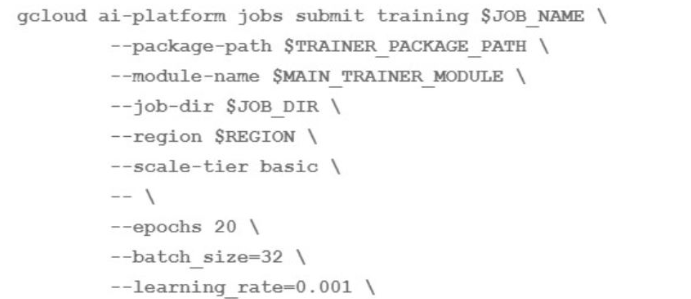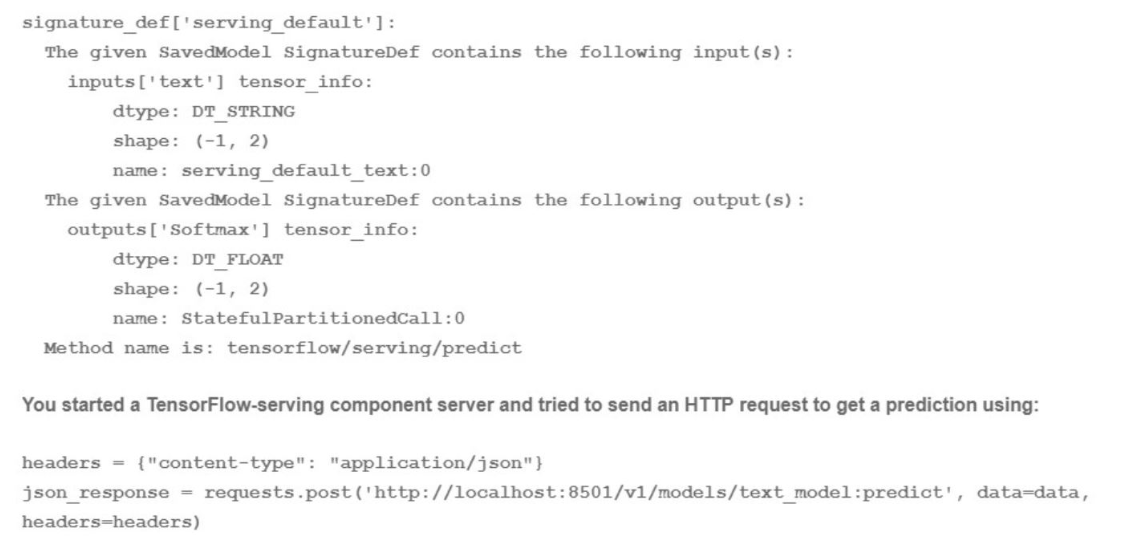Google Professional-Machine-Learning-Engineer - Google Professional Machine Learning Engineer
Total 285 questions
You work for a company that sells corporate electronic products to thousands of businesses worldwide. Your company stores historical customer data in BigQuery. You need to build a model that predicts customer lifetime value over the next three years. You want to use the simplest approach to build the model and you want to have access to visualization tools. What should you do?
You are training an LSTM-based model on Al Platform to summarize text using the following job submission script:

You want to ensure that training time is minimized without significantly compromising the accuracy of your model. What should you do?
You are training and deploying updated versions of a regression model with tabular data by using Vertex Al Pipelines. Vertex Al Training Vertex Al Experiments and Vertex Al Endpoints. The model is deployed in a Vertex Al endpoint and your users call the model by using the Vertex Al endpoint. You want to receive an email when the feature data distribution changes significantly, so you can retrigger the training pipeline and deploy an updated version of your model What should you do?
You recently developed a wide and deep model in TensorFlow. You generated training datasets using a SQL script that preprocessed raw data in BigQuery by performing instance-level transformations of the data. You need to create a training pipeline to retrain the model on a weekly basis. The trained model will be used to generate daily recommendations. You want to minimize model development and training time. How should you develop the training pipeline?
Your data science team needs to rapidly experiment with various features, model architectures, and hyperparameters. They need to track the accuracy metrics for various experiments and use an API to query the metrics over time. What should they use to track and report their experiments while minimizing manual effort?
You need to build an ML model for a social media application to predict whether a user’s submitted profile photo meets the requirements. The application will inform the user if the picture meets the requirements. How should you build a model to ensure that the application does not falsely accept a non-compliant picture?
You have created multiple versions of an ML model and have imported them to Vertex AI Model Registry. You want to perform A/B testing to identify the best-performing model using the simplest approach. What should you do?
You are building a custom image classification model and plan to use Vertex Al Pipelines to implement the end-to-end training. Your dataset consists of images that need to be preprocessed before they can be used to train the model. The preprocessing steps include resizing the images, converting them to grayscale, and extracting features. You have already implemented some Python functions for the preprocessing tasks. Which components should you use in your pipeline'?
You trained a text classification model. You have the following SignatureDefs:

What is the correct way to write the predict request?
You have deployed multiple versions of an image classification model on Al Platform. You want to monitor the performance of the model versions overtime. How should you perform this comparison?





